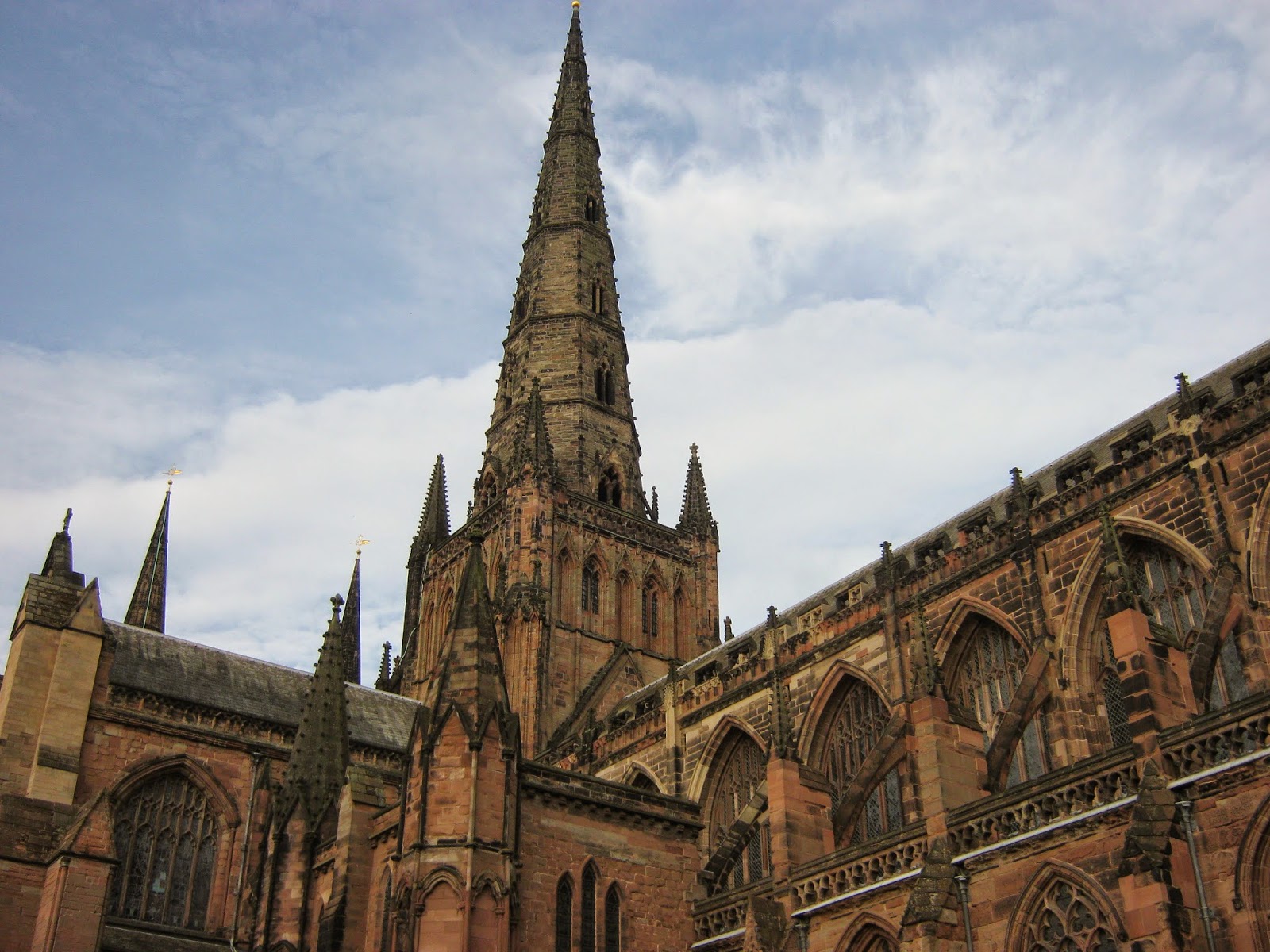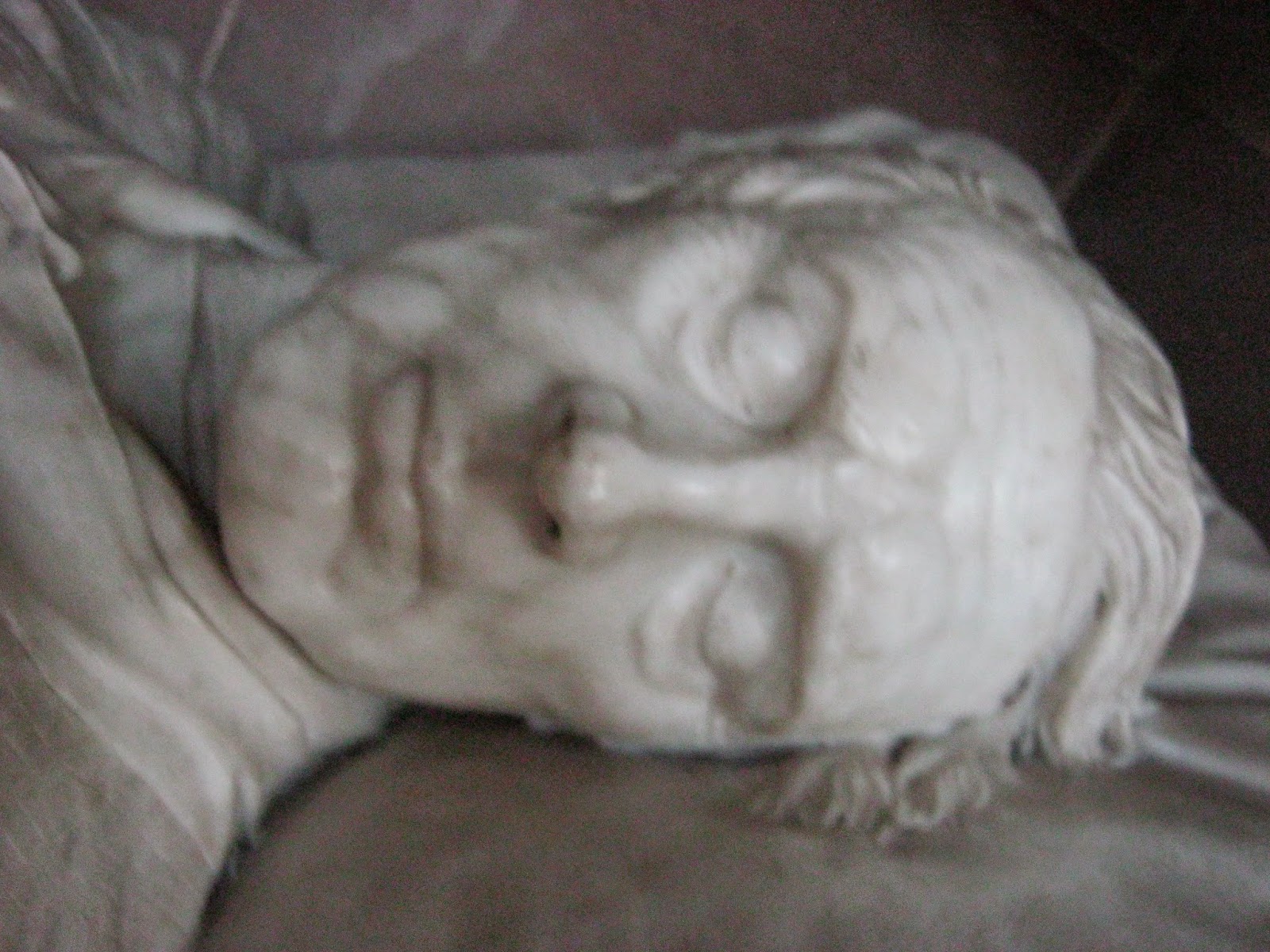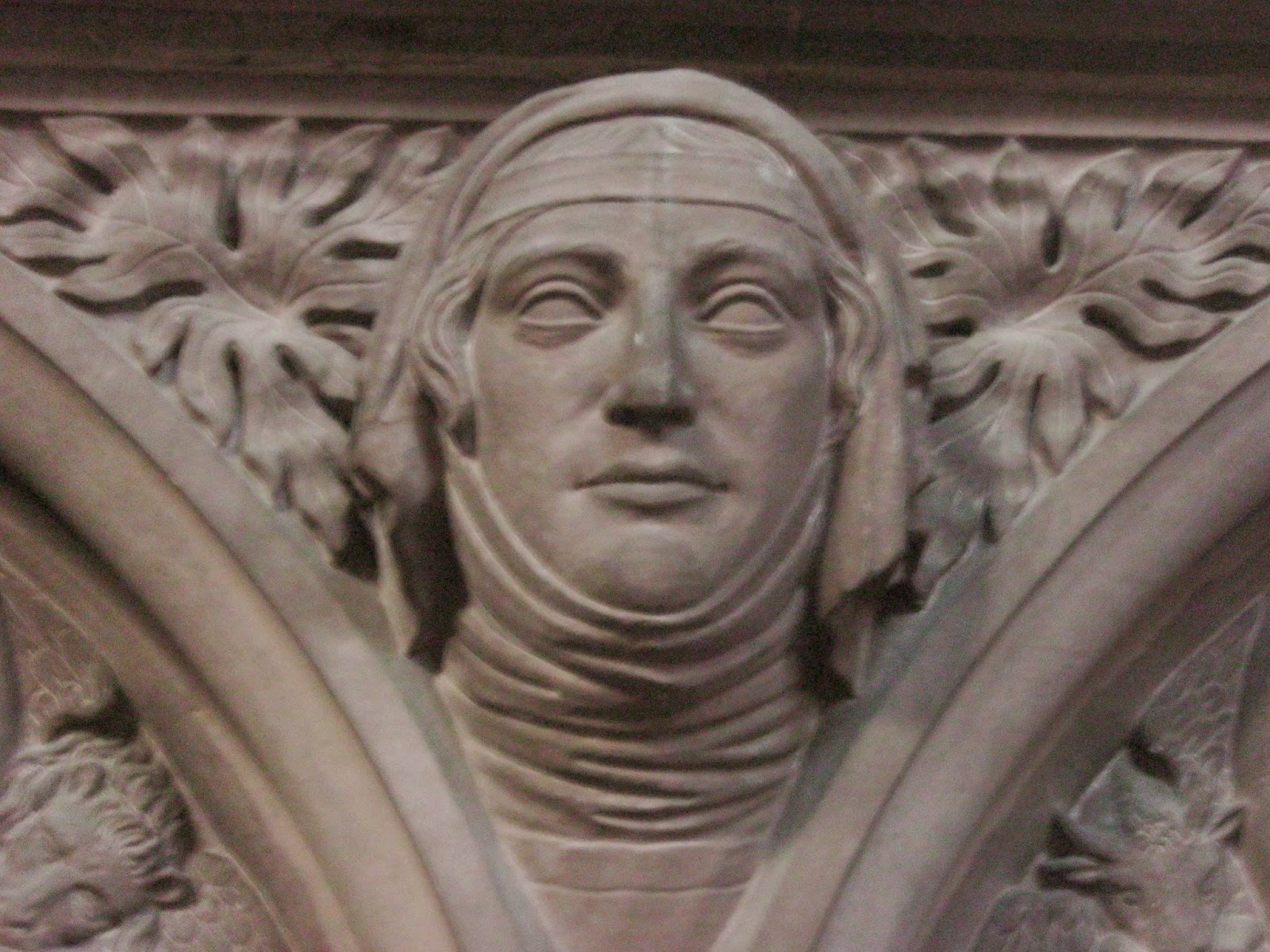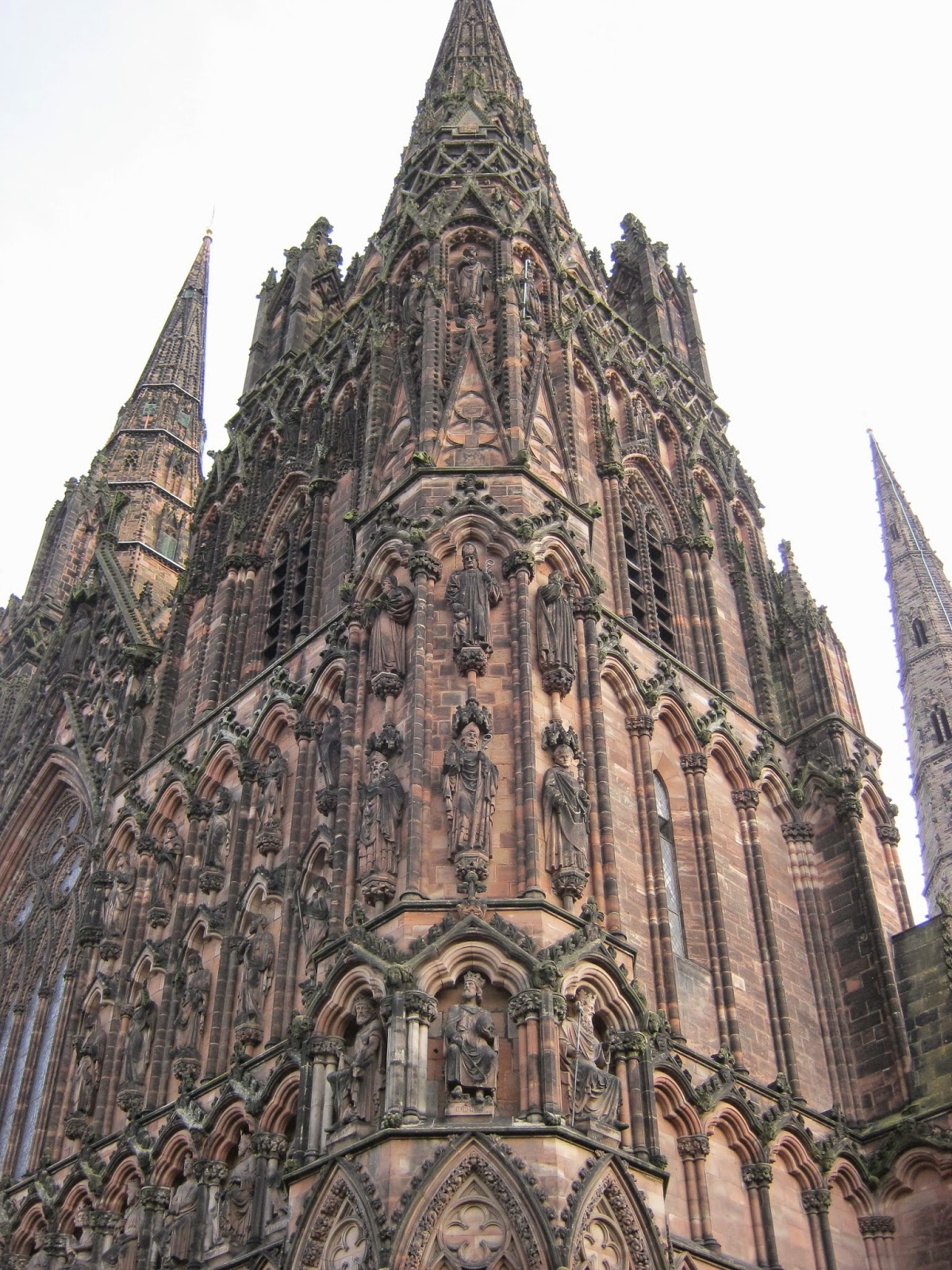Today we went out to the Lichfield Cathedral, a large Gothic structure with a lot of different structures, statues, and historical stylings which was very interesting to draw, sketch and photograph. We were tasked to get some inspiration from the building for next weeks session where we will be taking our study materials and turning them into pieces.

My first initial reaction to looking outside the cathedral was the sheer scale and majesty that it has as well as the medieval Gothic architecture that it possessed. The huge spires towered high above all of the other city's architecture like it was at the centre of everything. The colours of the stone were interesting as well with the reddish tints and back outlines over the smaller parts of the structure. At times it looked like it had a black outline around it like a graphic illustration. When I got up close I could see the years of weathering it had all over as well as where it had been repaired and built up upon over the centuries. Just outside of the Cathedral I saw a tourist sign that said a great battle of an English Civil war happened here which ended up destroying one of the spires. It's amazing to thinks that this Cathedral was once the sight of a bloody battle long ago. It also mentioned that some of the statues and stone decorations were damaged by the soldiers there as they were sharpening their swords on them and their marks could still be seen on them to this day. It's quite amazing how much this building has been apart of history and still shows the marks that it left on it I present day.

Once we went inside I got a deep feeling of calmness within me and felt somewhat at peace. The atmosphere was heavy within the building which was so quiet and cool in temperature. it made me really think about how people in the past had come here for sanctuary and peace so they could escape from the troubles of their lives. As I walked around the building I noticed that the corridors and arches were not in a straight line and were in fact uneven. This reminded me of the fact that this building was made by hand and not from machines and that blood, sweat, and tears went into constructing this place in tribute for God and not for the reasons we would a build a construction today, which today would probably be to either show off our wealth or power, or create space for work, shops, or any other conveniences that we highly demand this day. Its fascinating to see how much society has changed during the last several centuries back when this was built.

It occurred to me, while I was sketching a statue of a praying man, how much this building was completely saturated in the imagery of the Christian faith. I mean that might seem obvious because we are in a cathedral but literally everywhere you turn you could see tribute to the faith; on the ceiling, the floor, the paintings, the table cloths, the gold and stone decorations, the furniture, the windows, and even in the tiniest, most insignificant corners of the building you could see some kind of symbol for something mentioned in the bible. I find this funny because I remember reading about a 14th century painting that they uncovered that the people of the time covered because they feared that they would start to worship the imagery of God instead of the real God and, consequently commit blasphemy by worshipping a false idol. And now the Cathedral is covered in the imagery of the almighty. It's also incredibly ironic that the part of the painting that was supposed to depict god had weathered away by the time it had been uncovered.

What struck me when I observed the graves that surrounded the Cathedral was one particular grave that stated that this was where the person who died met his end aiding the construction of the Cathedral and that this is where they buried him. That's when I looked up and saw over a dozen other graves surrounding the side of the building. I'll admit it when I first looked up at that image I shuddered a little bit, but then I looked down again and read that the grave stone had been donated and sculpted by his fellow workers as a tribute to his memory. I really didn't know what to think at the time as it stirred up a lot of questions in my mind; did this person volunteer, was he religious, did he have a family, how many others met the same fate, were all those graves the ones that worked on the Cathedral? Now I realise that this grave really sums up the human condition; the belief in something higher, wanting to pay tribute with a offering, self-sacrifice, and a sense of community between fellow man in the face of adversity. I really wish sometime in the future I could hope to achieve in capturing the feeling that I felt during that moment of realisation in whatever field of art I wish to pursue. Today had been more enlightening then I imagined it to be and I'm glad it was.







































